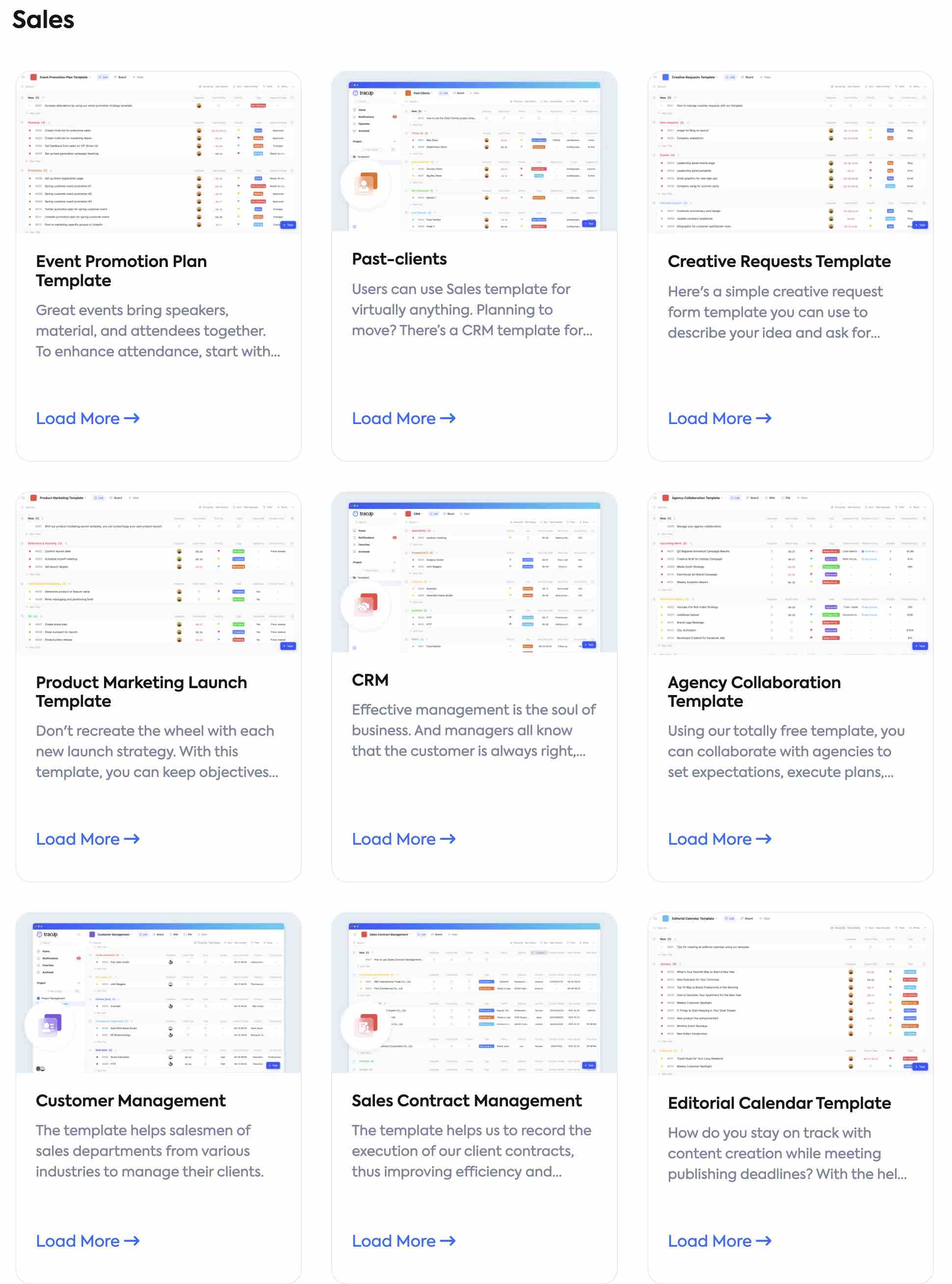SMART Goals Project Management helps teams achieve mission goals by setting specific, measurable, attainable, realistic, and time-sensitive task objectives to help achieve success. But there are too many complications involved, and using project management tools and example templates that support the SMART goal approach, like Tracup, is an effective path.
Refer Wikipedia, SMART is a mnemonic acronym, giving criteria to guide in the setting of goals and objectives for better results, for example in project management, employee performance management, and personal development.
George T. Doran developed the acronym SMART goal planning in 1981 to make goal-setting more practical. It helps teams set their goals and objectives more practically. The SMART approach prepares individuals and teams to be more productive. They can focus their efforts, clarify their thinking, use their time and resources wisely, and increase their chances of achieving more.
Once mission goals are defined, setting goals is the next step to moving forward with a clear understanding of how to achieve the desired outcome. The difference between goals and objectives is that goals are precise actions or measurable steps that companies and teams can take to get closer to their goals.
SMART Goals
SMART goals help improve the work efficiency of achievement and success. SMART goals spell out exactly what is expected and the measures that will be used to determine whether the goals are achieved and successfully completed. SMART goals can be used when drafting “maintenance” or “growth” goals.
A SMART goal meets the terminology criteria for the acronym SMART:
- Specific - Related to project, business, job, company, job description, team department goals, tasks, strategies, and plans. Answer the question - who and what?
- Measurable - Work efficiency improvement and Success in achieving goals are measurable. Answers the question - How?
- Attainable - The goal is realistic, achievable in a given time frame, and reasonable.
- Relevant - Goals are aligned with current tasks and projects and focused on a defined area; including expected outcomes.
- Time-oriented - Objectives have a clear time frame, including a target or deadline.
Specific
Goals are clear, detailed, and unambiguous.
To set specific goals, answer the following questions: who, what, where, when, which, and why.
It should also describe the result of the specific work. By being specific, the project manager formats the goal statement so that everyone who reads it can interpret it in the same way. It helps to use the 5W (Who, What, Where, When, Which, and Why) approach.
- What - What needs to be done? What do I want to accomplish?
- Why - Specific reasons, purpose, or benefits of accomplishing the goal. Why is it important?
- Who - Who is involved?
- Where - Identify a location. Where is it located?
- What: Identify requirements and constraints. What needs to be done?
Measurable
If a goal is not measurable, it is not possible to know whether progress toward successful completion is being made. Establish criteria you can use to measure work efficiency improvement and progress toward the attainment of the goal.
When checking, quantifiable terms such as cost, duration, frequency, quality, and quantity are helpful. In addition, teams should ensure that they can measure goals against any specific criteria.
A measurable goal will usually answer questions such as:
- How much?
- How many?
- How will I know when it is accomplished? Are these goals aligned with the business strategy?
- How much or how many do the stakeholders expect to achieve?
- Are these goals aligned with the business strategy?
- How much or how many do the stakeholders expect to achieve?
Attainable
Identify the most important goals and what is required to achieve them. In addition, teams and organizations should be aware of constraints that may prevent them from achieving their goals. A goal should not be so high that anyone would be pressured to even try to achieve it. It should not be so simple or so low that it does not push a team or individual to achieve their potential. It should be reasonable and attainable to ensure that it is possible without causing undue stress.
An achievable goal will usually answer these questions.
- How can the goal be accomplished?
- Can I make it happen?
- Can this person achieve this goal?
- Do I have the necessary skills and knowledge to achieve this expectation?
Relevant
A relevant goal must represent something that the goal setter is willing and able to work toward.
The team should be willing and able to work toward a particular goal. They must be relevant and linked to the team’s mission and vision.
This can best be accomplished by employees consulting with their managers to discuss how to set relevant goals. For the team to be successful, its employees should also aim for goals that are consistent with the organization’s objectives. Otherwise, the organization and its employees will not move harmoniously along the development path.
A relevant goal may answer the questions:
- Are these goals aligned with the business strategy?
- Does this seem worthwhile?
Timely
Establish a time frame for achieving the goal, which emphasizes the importance of giving the goal a target date. Commitment to deadlines helps focus efforts on accomplishing goals on or before the due date. Timeliness is intended to prevent goals from being overtaken by the daily crises that inevitably arise in the organization.
Goals must have a deadline. Work is fast-paced, no one likes deadlines, and if people don’t have a timeline to follow, tomorrow may be too late. If a timeline is not set, people will keep procrastinating and nothing will get done. In some cases, tasks have a set endpoint or a milestone. Other times, the end of one task marks the beginning of another.
A timely goal will usually answer these questions.
- When will it be completed?
- What can we do 3 months from now?
- What can I do today?
| Acronym |
Description |
Developing SMART Goals |
|---|
| S |
Specific |
Specify a project description, business goals/mission, and/or overall company goals and strategic plans. Answers the question — Who? and What? |
| M |
Measurable |
The success toward meeting the goal can be measured. Answers the question—How? |
| A |
Attainable |
Goals are realistic and can be achieved in a specific amount of time and are reasonable. |
| R |
Relevant |
The goals are aligned with specific tasks and projects and focus on one defined area and include the expected result. |
| T |
Timely |
Goals have a clearly defined time frame including a target or deadline time. |
As goals are set and different stages of goals are completed, reevaluate each goal to ensure they remain relevant and achievable. Once the goal is completed, celebrate its completion and begin developing new SMART goals.
SMART Goals Project Management Example Template
The SMART goal-setting approach has proven its usefulness for individuals and teams. But more than creating these goals, employees or team members should have the drive and motivation to achieve them. The success of a team depends heavily on the collaborative efforts of the team and its members.
Of course, after establishing project goals and setting SMART goals, the manager must measure the project’s progress to ensure that it is moving toward its goals. Teams use a variety of goal tracking methods, tools, and project management tools to help measure progress toward results. Doing all of this is not easy, and it is easier to achieve outputs using task management tools, like Tracup, that support SMART goals.
Tracup is a productive workspace that integrates the flows of tasks, projects, work, and even your issues of study, life, and entertainment in a whole new way. The platform’s core focus is to overcome the fragmentation and disconnects caused by existing solutions. Manage your tasks, calendars, reminders, and notifications in your personal and work life - all in one place. Choose the features you want to use and customize Tracup the way you want. Produce more in less time by combining the tools you use every day into an intuitive and powerful workspace.
- Free lifetime plan for unlimited users forever
- Fixed low-cost BUSINESS plan for teams of any size at USD899 per year per team (less than $75 per month and no longer increasing with users)
- Offers unique features designed for developers (e.g, bug tracking, development status)
- Create and manage product roadmaps
- Agile reporting
- Large number of features
- Customizable
- Comprehensive tools for teams
- Flexible layout
- Intuitive to learn
Tracup Template Center saves time by providing standardized project templates and creating projects in a rapid way for SMART Goals based on mainstream workflow in the specific scenario of various industries.

Now you can begin to implement SMART goals for the team and incorporate them into daily life. There are many ways to get started, such as organizing an environment to make sure the team is always motivated and focused on work.
Learn more about SMART Goals:
How SMART Goals Help Project Management To Get Job Done
SMART Goals Project Management helps teams achieve mission goals by setting specific, measurable, attainable, realistic, and time-sensitive …
5 Smart Goal and SOPs Examples For New Hires
Goal setting needs a smart goal to guide. SMART represents many different elements. The smart goal template helps the HR department to complete …
How well a person works depends to a large extent on the level of work efficiency
In the post-epidemic era, remote working has become an essential part of people’s daily life. Meanwhile, the widespread use of the internet also reduces time costs to a certain extent and increases the efficiency of collaboration. Find out how to combine work and rest so you get twice the result with half the effort.
In a rapidly developing environment, without continuous learning, employees will be filled with a sense of powerlessness and be left behind by the times. The effort is a sufficient or essential condition for success, but it is not a guarantee of success. The collaboration of individuals with other team members at work can directly determine the outcome. To improve daily office efficiency, having a caring office assistant can make the results twice better.
Read more about 5 Strategies to Improve Work Efficiency and Effectiveness
To improve work efficiency, it is necessary to find a way for improvement, it’s just SMART Goals Project Management Example Template can help.
Don’t wait for a second, hit Tracup Template Center right away to get more templates for free.








